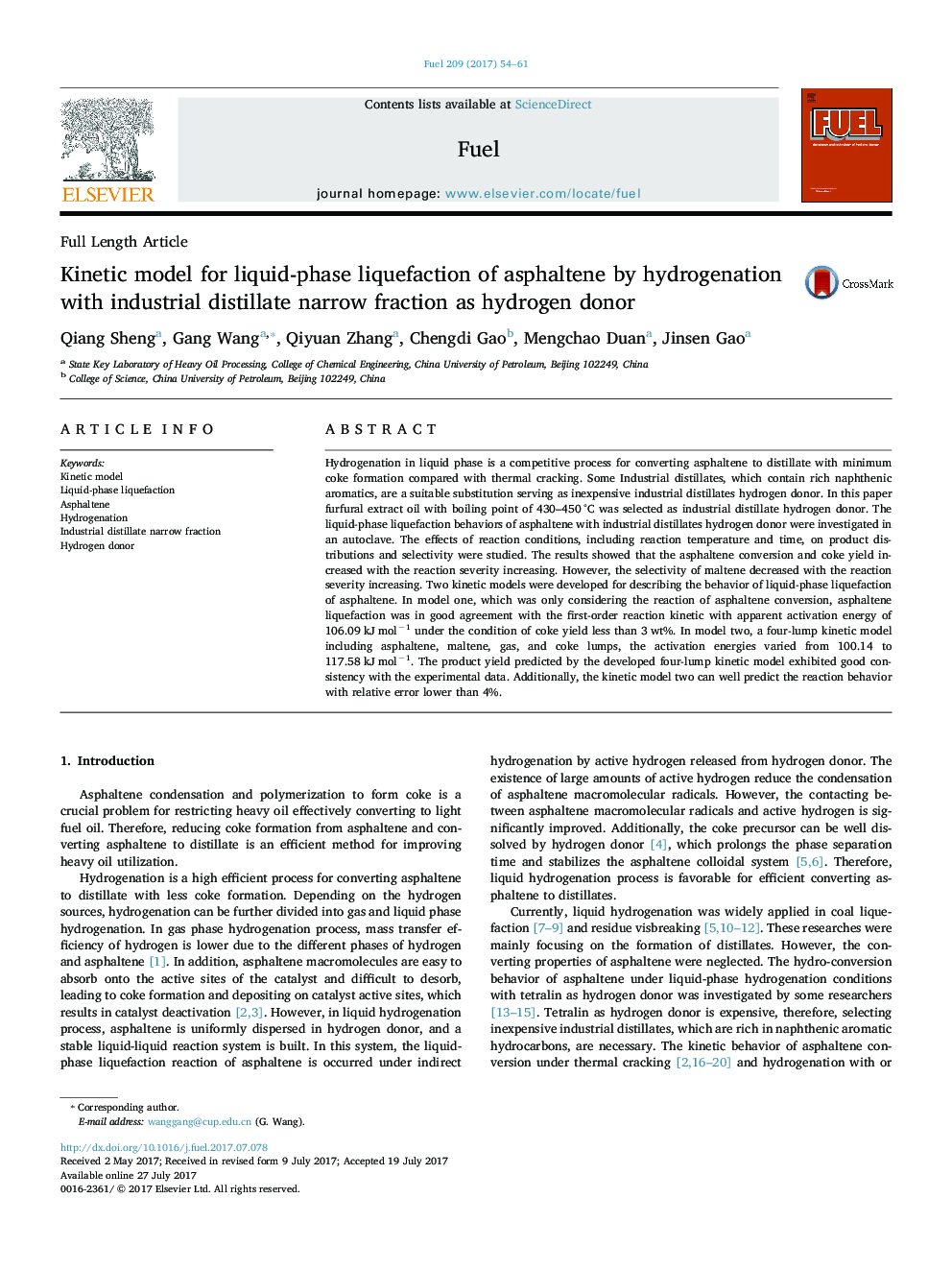| کد مقاله | کد نشریه | سال انتشار | مقاله انگلیسی | نسخه تمام متن |
|---|---|---|---|---|
| 6473815 | 1424955 | 2017 | 8 صفحه PDF | دانلود رایگان |
- Industrial distillates used as hydrogen donor for releasing active hydrogen.
- Asphaltene liquid-phase hydrogenated by active hydrogen.
- Kinetic models were in good agreement with first-order reaction kinetic.
- Lower activation energy of liquid-phase hydrogenation than thermal cracking.
Hydrogenation in liquid phase is a competitive process for converting asphaltene to distillate with minimum coke formation compared with thermal cracking. Some Industrial distillates, which contain rich naphthenic aromatics, are a suitable substitution serving as inexpensive industrial distillates hydrogen donor. In this paper furfural extract oil with boiling point of 430-450 °C was selected as industrial distillate hydrogen donor. The liquid-phase liquefaction behaviors of asphaltene with industrial distillates hydrogen donor were investigated in an autoclave. The effects of reaction conditions, including reaction temperature and time, on product distributions and selectivity were studied. The results showed that the asphaltene conversion and coke yield increased with the reaction severity increasing. However, the selectivity of maltene decreased with the reaction severity increasing. Two kinetic models were developed for describing the behavior of liquid-phase liquefaction of asphaltene. In model one, which was only considering the reaction of asphaltene conversion, asphaltene liquefaction was in good agreement with the first-order reaction kinetic with apparent activation energy of 106.09 kJ molâ1 under the condition of coke yield less than 3 wt%. In model two, a four-lump kinetic model including asphaltene, maltene, gas, and coke lumps, the activation energies varied from 100.14 to 117.58 kJ molâ1. The product yield predicted by the developed four-lump kinetic model exhibited good consistency with the experimental data. Additionally, the kinetic model two can well predict the reaction behavior with relative error lower than 4%.
Journal: Fuel - Volume 209, 1 December 2017, Pages 54-61
